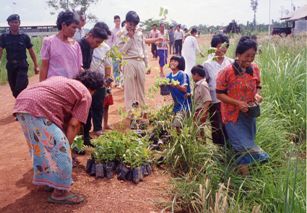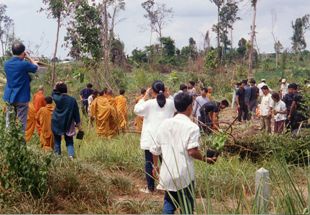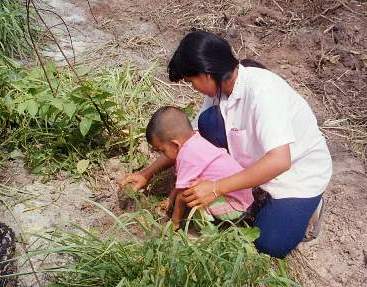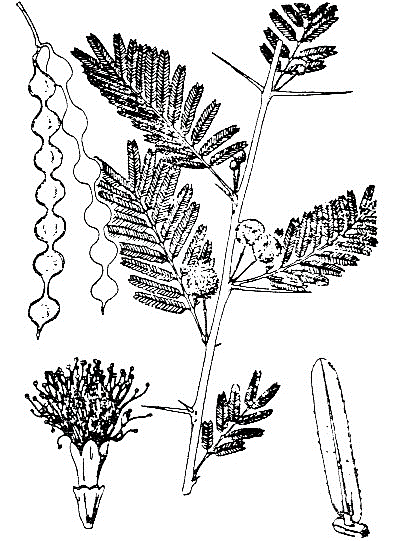


Acacia nilotica
 Origin
Origin
Africa and South Asia
Ecology
Annual rainfall: 600-1200mm.
Normal temp range: 9-40°C.
Altitude range: 15-600m.
Seasonal adaptability: withstands drought extremely well.
Soils: prefers alkamine to neutral soils, deep soils, and alluvial loams; grows on heavier clay soils as well.
Light requirement: requires full sun.
Description
Height at maturity: 10-15m.
Diameter at breast height (1.3m) at maturity: 40-6-cm.
Form: spreading crown, heavy branching and crooked stem. Variety cupressiformis has a narrow crown and broom-like ascending branches.
Coppicing ability: fair; responds well to pollarding.
Growth: at 20 years, up to 12m in height, 20cm diameter.
Other: fixes nitrogen, thorny.
Primary advantages
Excellent fuelwood species and good shade tree; grows well on a range of sites from dry to moist; can withstand periodic heavy flooding and saline soils.
Primary disadvantages
Thorns prevent use of foliage for fodder; can become a weed if not managed, particularly under irrigated conditions; susceptible to leaf defoliators, beetles and damping off.
Products and yields
Wood products: small timber, fuelwood; up to 80m3/ha in 15 years.
Fuelwood: caloric value of 4800-4950 kcal/kg; planted in irrigated plantations to provide fuel to power locomotives, boilers and other industrial uses.
Fodder: leaves and pods are palatable; thorns are a problem. Pods contain up to 15% protein.
Other: tannin production, (bark and pods 12-20% tannin content); good quality honey; fair quality edible gum.
Propagation
Commonly direct seeded; young trees muxt be protected from browsing animals and need weeding.
Seed treatment
Fresh seeds can be planted directly. Older seeds need hot water treatment. Seeds may also be mixed with fresh cow dung and left in heaps for four to five days.
Management
Pollarding, lopping or pruning on a regular basis provides fodder to animals and keeps tree size desirable.
Agroforestry uses
Its open crown and pod production make this very good for livestock grazing systems.